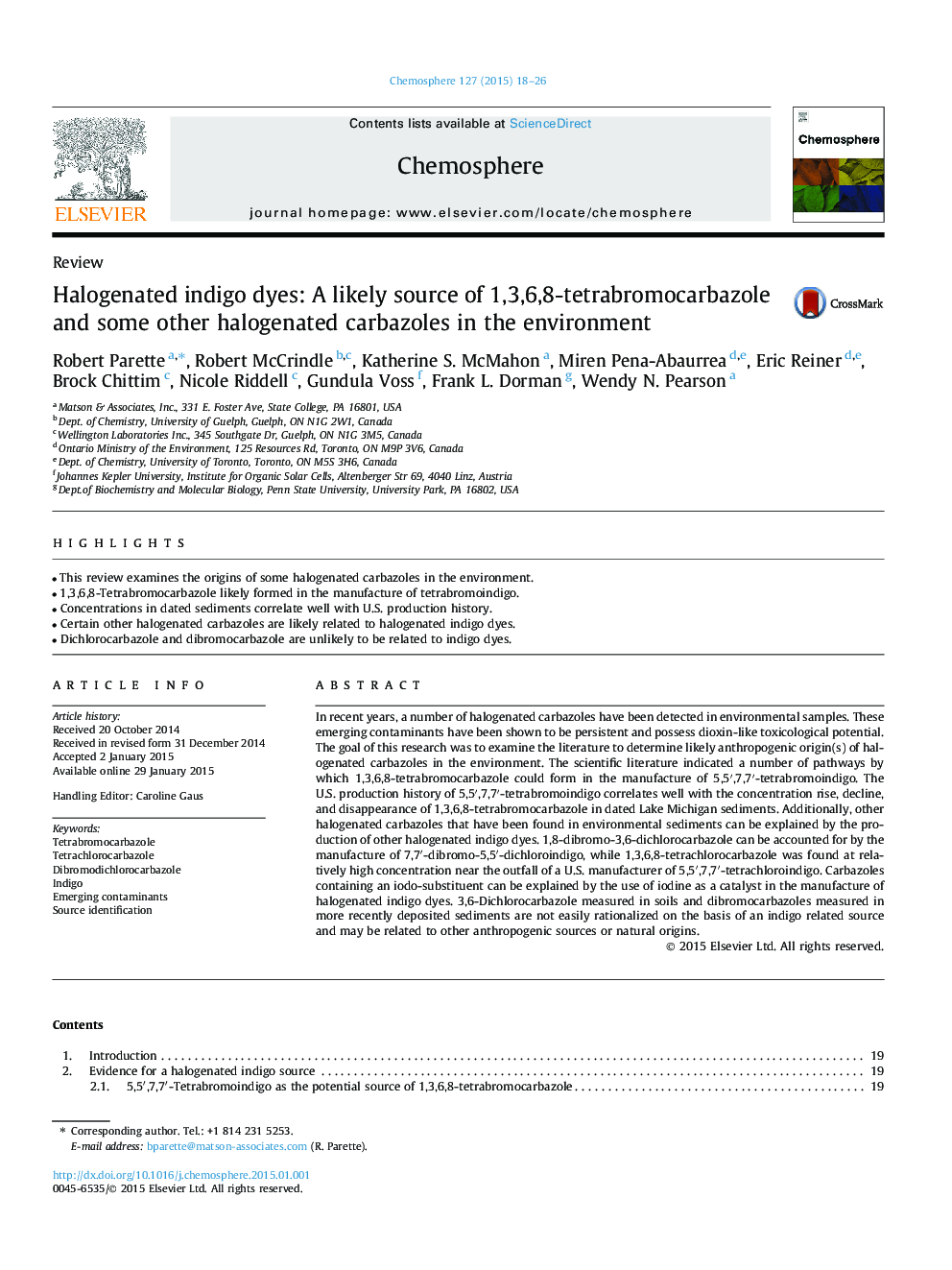| کد مقاله | کد نشریه | سال انتشار | مقاله انگلیسی | نسخه تمام متن |
|---|---|---|---|---|
| 4408513 | 1618844 | 2015 | 9 صفحه PDF | دانلود رایگان |
• This review examines the origins of some halogenated carbazoles in the environment.
• 1,3,6,8-Tetrabromocarbazole likely formed in the manufacture of tetrabromoindigo.
• Concentrations in dated sediments correlate well with U.S. production history.
• Certain other halogenated carbazoles are likely related to halogenated indigo dyes.
• Dichlorocarbazole and dibromocarbazole are unlikely to be related to indigo dyes.
In recent years, a number of halogenated carbazoles have been detected in environmental samples. These emerging contaminants have been shown to be persistent and possess dioxin-like toxicological potential. The goal of this research was to examine the literature to determine likely anthropogenic origin(s) of halogenated carbazoles in the environment. The scientific literature indicated a number of pathways by which 1,3,6,8-tetrabromocarbazole could form in the manufacture of 5,5′,7,7′-tetrabromoindigo. The U.S. production history of 5,5′,7,7′-tetrabromoindigo correlates well with the concentration rise, decline, and disappearance of 1,3,6,8-tetrabromocarbazole in dated Lake Michigan sediments. Additionally, other halogenated carbazoles that have been found in environmental sediments can be explained by the production of other halogenated indigo dyes. 1,8-dibromo-3,6-dichlorocarbazole can be accounted for by the manufacture of 7,7′-dibromo-5,5′-dichloroindigo, while 1,3,6,8-tetrachlorocarbazole was found at relatively high concentration near the outfall of a U.S. manufacturer of 5,5′,7,7′-tetrachloroindigo. Carbazoles containing an iodo-substituent can be explained by the use of iodine as a catalyst in the manufacture of halogenated indigo dyes. 3,6-Dichlorocarbazole measured in soils and dibromocarbazoles measured in more recently deposited sediments are not easily rationalized on the basis of an indigo related source and may be related to other anthropogenic sources or natural origins.
Journal: Chemosphere - Volume 127, May 2015, Pages 18–26
